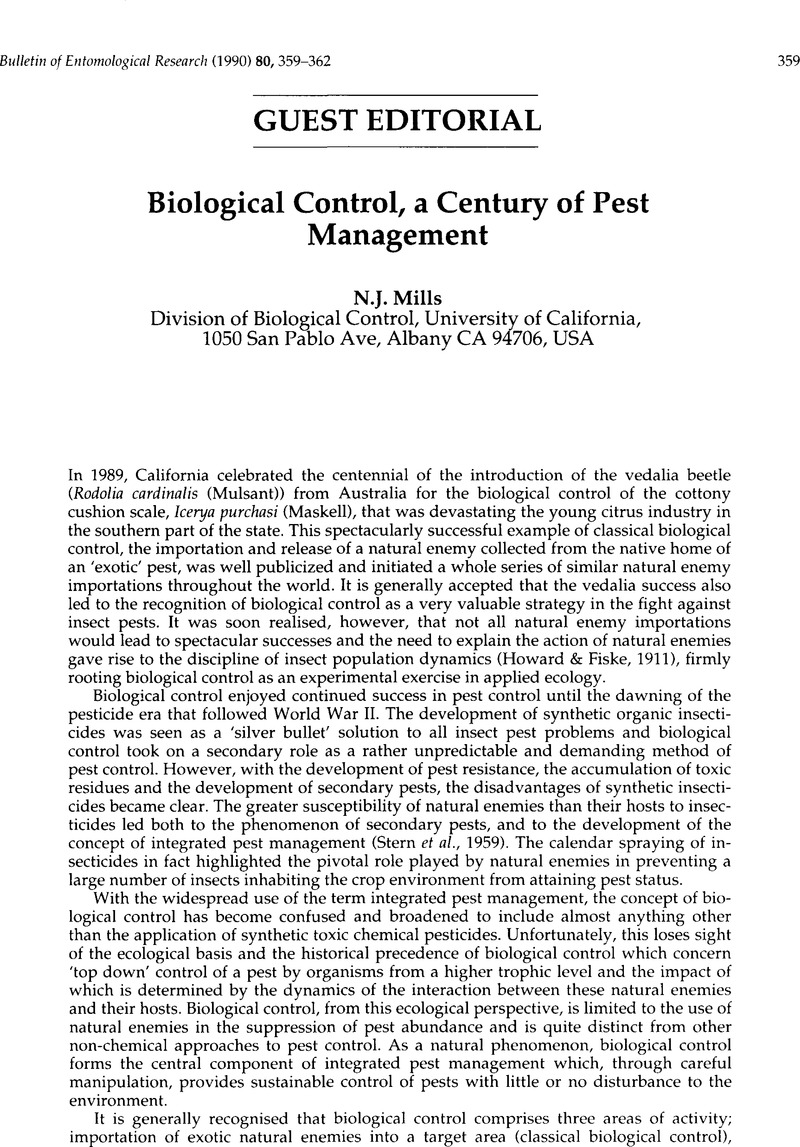Crossref Citations
This article has been cited by the following publications. This list is generated based on data provided by Crossref.
McDougall, S. J.
and
Mills, N. J.
1997.
Dispersal of Trichogramma platneri Nagarkatti (Hym., Trichogrammatidae) from point‐source releases in an apple orchard in California.
Journal of Applied Entomology,
Vol. 121,
Issue. 1-5,
p.
205.
HAGEN, K.S.
MILLS, N.J.
GORDH, G.
and
MCMURTRY, J.A.
1999.
Handbook of Biological Control.
p.
383.
PEDERSEN, BRENT S.
and
MILLS, NICHOLAS J.
2004.
Single vs. multiple introduction in biological control: the roles of parasitoid efficiency, antagonism and niche overlap.
Journal of Applied Ecology,
Vol. 41,
Issue. 5,
p.
973.
Mills, Nick
2005.
Selecting effective parasitoids for biological control introductions: Codling moth as a case study.
Biological Control,
Vol. 34,
Issue. 3,
p.
274.
Mills, Nick
2006.
Trophic and Guild in Biological Interactions Control.
Vol. 3,
Issue. ,
p.
191.
Zúbrik, Milan
and
Novotný, Július
2009.
Impact of gamma radiation on the developmental characteristics of the gypsy moth,Lymantria dispar(Lepidoptera: Lymantriidae) preparatory to their use as supplemental hosts/prey for natural enemy enhancement.
Biocontrol Science and Technology,
Vol. 19,
Issue. sup1,
p.
291.
Hegazi, Esmat
Khafagi, Wedad
Herz, Annette
Konstantopoulou, Maria
Hassan, Serif
Agamy, Essam
Atwa, Atwa
and
Shweil, Sania
2012.
Dispersal and field progeny production of Trichogramma species released in an olive orchard in Egypt.
BioControl,
Vol. 57,
Issue. 4,
p.
481.





